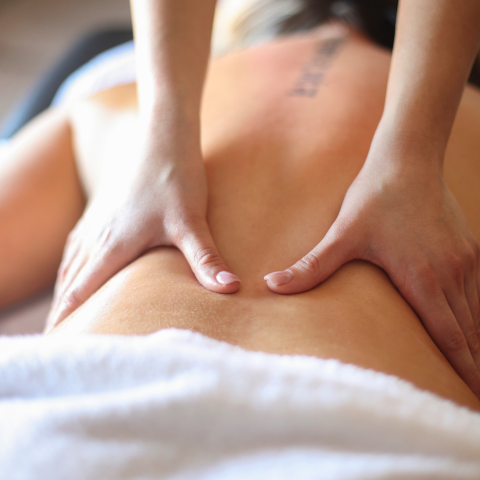Simple Stress Relief Activities That Actually Work
Key Takeaways:
Practical Techniques You Can Start Today: Learn six practical, low-effort stress relief methods anyone can start using right away.
The PRESS Difference: Learn how PRESS aims to support physical and emotional well-being through accessible massage experiences.
Build Long-Term Stress Relief Habits: Explore simple daily tips for making stress management a regular, sustainable part of your life.
Stress shows up in your body and mind in ways you may not even notice at first — tight muscles, poor sleep, racing thoughts. But managing stress doesn’t have to be complicated. Small daily habits can make a big difference. Whether it’s getting outside, stretching, or booking a massage, there are simple ways to feel better and stay grounded.
In this piece, we’ll share easy stress relief activities that actually work.
Why Stress Relief Matters
Stress isn’t just an emotional experience — it impacts your body, mind, and long-term well-being. When left unmanaged, chronic stress can contribute to physical health issues such as headaches, insomnia, high blood pressure, and even weakened immunity. Mentally, it can cloud your judgment, reduce productivity, and lead to burnout.
That’s why regular stress relief is more than just a luxury — it’s a necessity. Engaging in simple, intentional activities helps your nervous system reset, calms your mind, and creates space to think more clearly. Even small actions can make a big difference when practiced consistently.
In today’s fast-paced world, finding easy ways to unwind doesn’t have to be complicated or time-consuming. The key is finding what works for you — and doing it regularly.
Take a Walk Outside
One of the simplest ways to ease stress is to step outside and move your body. Walking — especially in natural settings — can quickly shift your mindset. It boosts endorphins, lowers cortisol levels, and gives your brain a chance to unplug from screens and responsibilities.
You don’t need a long hike or a dramatic change of scenery. A short walk around the block, through a local park, or even just a few laps in your backyard can be enough to reset. Being in nature, even briefly, has been linked to reduced anxiety and improved mood.
Try walking without distractions — no phone, no podcasts — just a few minutes of quiet to reconnect with your thoughts and breathe deeply. It’s a small act, but it can have a big impact on how you feel the rest of the day.
Try Guided Breathing or Meditation
When stress feels overwhelming, your breath can be your anchor. Guided breathing exercises and meditation are powerful tools that help calm your nervous system and bring you back to the present moment.
Even just a few minutes of focused breathing — like inhaling for four counts, holding for four, and exhaling for four — can slow your heart rate and reduce tension. Guided meditations, which are widely available through apps and websites, can help you stay focused if your mind tends to wander.
The beauty of these practices is that they require no equipment and can be done almost anywhere: in bed, at your desk, or during a lunch break. Over time, regular practice can improve your resilience to stress and help you feel more in control during life’s tougher moments.
Unplug for 30 Minutes
In a hyper-connected world, constant notifications and screen time can quietly drain your energy and add to your stress — often without you realizing it. Taking just 30 minutes to unplug each day can create much-needed mental space.
Use this time to disconnect from your phone, computer, and even the TV. Instead, do something offline: read a book, make a cup of tea, sit quietly, or go for that walk. Giving your brain a break from digital noise allows it to recharge and helps reduce mental clutter.
This doesn’t have to be complicated or scheduled. The key is consistency. Making unplugging a daily habit — even in short bursts — can improve your focus, mood, and sleep over time.
Stretch It Out With Gentle Movement
Tension often shows up in the body before we even notice it in the mind. Gentle movement — like stretching, yoga, or light mobility exercises — can help release that physical stress and leave you feeling more grounded.
You don’t need a full workout. A few neck rolls, shoulder stretches, or forward bends can help loosen tight muscles and increase circulation. If you’re sitting for most of the day, getting up to stretch for even five minutes can improve how your body feels and give your mind a reset.
Movement also encourages mindful awareness. Focusing on how your body feels during stretching naturally pulls you into the present moment, which helps interrupt racing thoughts or anxious spirals.
Visit a Massage Studio
When your body feels tight and overworked, professional massage therapy may help support relaxation and promote a sense of balance. A great example is PRESS. We focus on delivering purposeful massage sessions designed to meet your individual wellness goals.
Our welcoming environment is designed to help you decompress at any time, whether you need some “me time” after work or a mid-afternoon break. Whether you’re dealing with work-related stress, physical fatigue, or just need to slow down, a visit to PRESS can help you reset.
Booking time for massage isn’t just about relaxation—it’s a form of self-care that supports your body.
Get Creative With Art or Journaling
Creative expression can be a powerful outlet for stress. Whether it’s drawing, painting, writing, or even doodling, engaging your creative side allows you to release emotions, shift focus, and process thoughts in a healthy way.
Journaling, in particular, is a simple practice with big benefits. Writing down your thoughts — even just a few sentences a day — can help clear mental clutter and make sense of what’s on your mind. It’s not about being a great writer; it’s about being honest with yourself.
Art and journaling also provide a quiet form of mindfulness. They keep your hands busy and your attention focused on something meaningful, which can offer a break from overthinking or stress loops.
There’s no right or wrong way to be creative! Just give yourself permission to explore.
Simple Tips to Make Stress Relief a Habit
Trying a few stress relief activities is a great start, but making them part of your regular routine is where the real change happens. Here are a few easy ways to build consistency:
Start Small and Stay Consistent
Don’t try to change everything at once. Begin with one or two activities that feel realistic and low-pressure. Once those become part of your rhythm, you can gradually build from there without feeling overwhelmed.
Schedule It In
Treat stress relief the same way you would treat an important meeting: add it to your calendar and commit to it. Blocking off time makes it easier to follow through and shows that your mental well-being is a priority.
Listen to Your Body
Some days you might need movement, while others call for rest or reflection. Pay attention to what your body and mind are asking for, and choose the activity that meets that need in the moment.
Create Visual Reminders
A sticky note on your mirror or a daily phone reminder can gently nudge you to take a breather. These small prompts help you stay mindful of your commitment, especially when life gets busy.
Let Go of “Perfect”
Don’t wait for the perfect setting, time, or energy level to start — just do what you can with what you have. Even a few minutes of imperfect practice can have a meaningful impact on your stress levels.
Final Thoughts
Stress is an unavoidable part of life, but how you respond to it makes all the difference. The good news is that relief doesn’t have to come from big changes — it often starts with small, intentional actions repeated consistently.
From walking outside to visiting a massage studio like PRESS, there are simple tools available to help you feel more balanced and in control. The key is finding what works for you and making space for those habits regularly.
Remember, taking care of your mental and physical well-being isn’t selfish; it’s essential. Prioritize your peace, listen to your body, and give yourself permission to slow down.
Read also:
Frequently Asked Questions About Simple Stress Relief Activities
How can I tell if an activity is actually reducing my stress?
You’ll notice a shift in how your body and mind feel — reduced tension, slower breathing, or clearer thinking. It helps to check in with yourself before and after to compare your stress levels.
Are there stress relief activities for people who dislike meditation or yoga?
Yes, activities like creative hobbies, listening to music, volunteering, or playing with pets can offer relief without requiring stillness or silence. The key is to find something that brings joy or calm.
How often should I engage in stress relief activities?
Daily practice is ideal, even if it's just for 5–10 minutes. Regularity is more effective than long, infrequent sessions.
Do stress relief activities differ by age or lifestyle?
Yes, what works best can vary depending on your age, job, physical abilities, and preferences. For example, a busy parent might benefit from journaling at night, while a student might prefer music breaks between study sessions.
Is it normal to feel guilty for taking time to de-stress?
Yes, especially in fast-paced cultures. But it’s important to remember that taking time to recharge allows you to show up more fully in other areas of your life.
What should I do if none of the common activities seem to work for me?
There are plenty of less conventional options for you to pick from, like aromatherapy or working with your hands (gardening, woodworking). Sometimes it takes experimenting to find your best fit.


